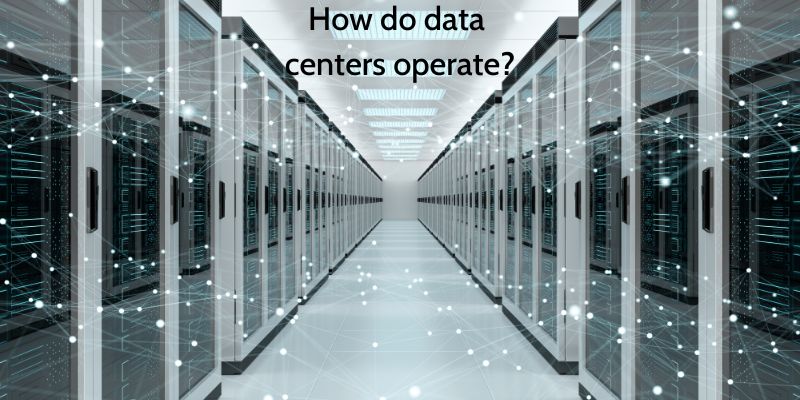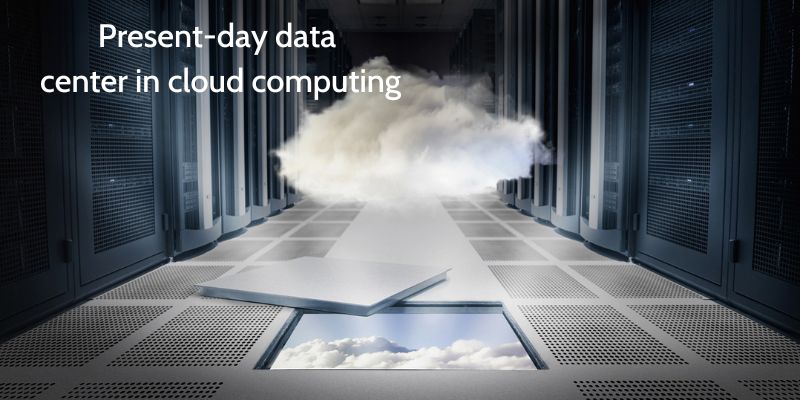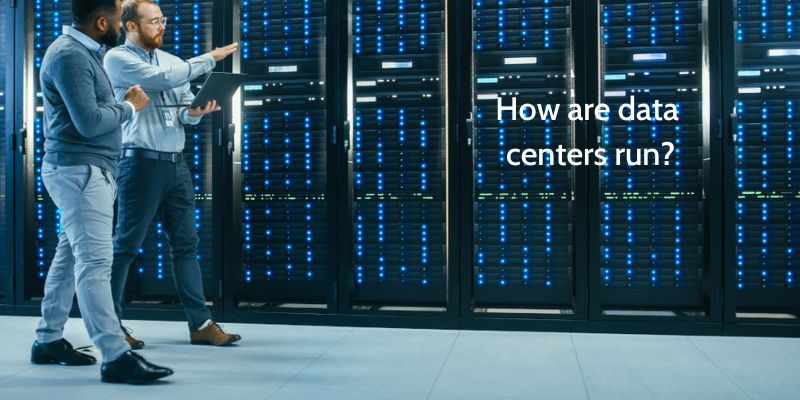The traditional data center in cloud computing model is obsolete in the age of cloud computing. The commoditization of computation, storage, and network resources by cloud providers has led to the emergence of the data center in cloud computing. These data center in cloud computing are owned and operated by cloud-based data centers themselves. In comparison to traditional data centers, they can charge less for their services. See more on tapchiai.net
The basic assumption of the traditional data center concept was that space and power would be rented or leased from the data center in cloud computing owner. This is no longer useful in the era of cloud computing.
1. A data center is what?
A data center, also referred to as a data center in cloud computing , is a building with networked computers, storage systems, and computational infrastructure that corporations and other organizations use to organize, process, and store massive volumes of data. to broadcast, too. A data center is a focal point and essential resource for daily operations because a firm often depends largely on the applications, services, and data contained therein.
To safeguard and defend internal, onsite resources, enterprise data centers are rapidly integrating cloud computing services and infrastructure. The distinction between enterprise data centers and cloud providers’ data centers is blurring as businesses turn more and more to cloud computing.
2. How do data centers operate?

An organization’s infrastructure and resources for data processing, storage, and communication, such as:
Physical infrastructure supporting data center in cloud computing processing and data transfer; systems for storing, sharing, accessing, and processing data across the company; and utilities including cooling, energy, network access, and uninterruptible power supplies (UPS).
The company can: by consolidating all of these resources in a single data center;
implementing information security measures on proprietary systems and data; centralizing IT and data processing staff, contractors, and vendors; Also, by combining delicate systems in one location, realize economies of scale.
3. What changed to create the contemporary data centers?
Early computer systems needed a lot of bulky components, which operators connected with a lot of cables. In order to prevent overheating, they also required cooling and consumed a lot of power. Companies often centralized all the gear for managing these mainframe computers in a single space known as a data center in cloud computing. Each business made a financial commitment to and kept up its own data center in cloud computing building.
The size and power consumption of computers have decreased over time as a result of hardware technology advancements. However, IT systems also grew increasingly complicated at the same time, for example, in the following ways:
- Companies produced and stored an ever greater amount of data.
- Software and underlying hardware were separated by virtualization technology.
- Applications can now be run on distant hardware thanks to networking advancements.
4. Present-day data center in cloud computing

To more effectively handle IT complexity, modern data center in cloud computing design evolved. Companies employed data centers to store physical infrastructure in a single, accessible location. As a result of the development of cloud computing, external corporations now oversee the management and upkeep of data centers and provide infrastructure as a service to other businesses. Innovative cloud data centers have been built all over the world by AWS, the top provider of cloud services.
5. Why Purchase a Cloud data center in cloud computing ?
Business operations include expensive computing solutions. A large initial investment as well as continuing maintenance expenses go into an on-premise data center in cloud computing architecture. Cloud computing is a more cost-effective answer for the ever-tighter budgets. Compared to the conventional on-premise data center in cloud computing, cloud computing has many advantages, such as:
- Adaptability – Pay only what you absolutely must. Additionally, when your company expands, a cloud-based service provider like Summit Hosting gives you on-demand access to more data or computer power. If your existing arrangement becomes unusable, you can also buy more bandwidth. Summit Hosting develops alongside you, empowering you to move forward with assurance.
- Current Technology – Computing equipment has a relatively limited lifespan, and technology doubles in power every 18 months. For many firms, it is not only unfeasible but also utterly exorbitant to replace components like routers every few years. The same upgrade restrictions do not apply to cloud infrastructure.
- Flexibility – A full cloud-based solution isn’t the best choice for every company, but more companies are utilizing a hybrid cloud platform. While less sensitive apps and storage services rely on a cloud provider, IT staff still operate an on-site data center for the most crucial applications using this platform.
- Simple Migration: Data held in conventional data centers can migrate to the cloud in a simple manner thanks to integrations and APIs. Although detractors often cite horror stories, when businesses follow a rigorous procedure, the process is swift and easy. By responding to any inquiries that may arise, Summit Hosting’s professionals can assist with integration even further .
6. How are data centers run?

The control of many applications, services, and processes related to data centers is known as data center management. This takes into account managing huge amounts of hardware, software, and data in addition to maintenance and security.
Responsibilities are permitted in the data center, and data management is performed by combining the performance of everyone’s duties. Some of each person’s tasks and responsibilities in data management are listed below.
Upkeep of the hardware and software in data centers, including updates and installations
Using network and Internet service providers, connecting possibilities to external third parties
coordinating the transfer, flow, and storage of data and applications
Creating and implementing a solid backup plan
Making preparations for continuity and catastrophe recovery
Daily technical support (in some situations, supplemental after-hours emergency assistance)
Conclusion
Most businesses would be prudent to invest in data centers. They cost a lot of money, but when used in conjunction with cloud computing, they are effective and profitable. Some people’s needs are not met by data centers. Prior to making a data center investment, the environment must be examined.







